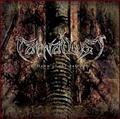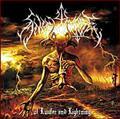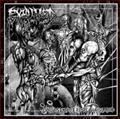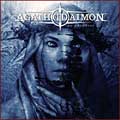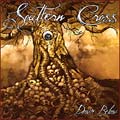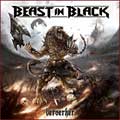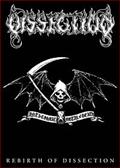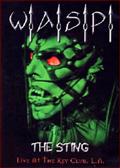NECROMANTIA (gr) - Crossing The Fiery Path (2005)
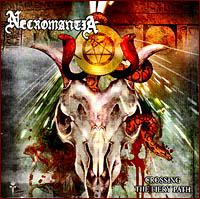
Label : Black Lotus Records
Sortie du Scud : 1993 / 21 novembre 2005
Pays : Grèce
Genre : Black Metal occulte
Type : Album (Réédition)
Playtime : 8 Titres - 46 Mins
Issue d’une grande, vaste et riche Civilisation, la Grèce n’en est pas moins larguée question Metal. Comptant dans ses terres de nombreux groupes reconnus sur la scène internationale comme SEPTIC FLESH, VARATHRON, ROTTING CHRIST, NIGHTFALL ou bien ASTARTE, les Hellènes manifestent un goût prononcé pour le Black et tout ce qui a attrait à l’occulte en particulier.
Terre Chrétienne par définition, c’est en 1989 que NECROMANTIA a vu le jour et s’est orienté vers un Black Metal ténébreux dès les prémices de son existence terrienne. Fondé par Morbid (basse, voix) et Baron Blood (basse huit cordes), le son des Athéniens tire sa particularité de la non utilisation de guitares ! Celles-ci sont tout simplement remplacées par une basse 8 cordes. Les rythmiques qui en découlent sont donc ainsi plus lourdes, graves et sentencieuses, adéquates pour l’univers des invocateurs des esprits des trépassés.
C ‘est donc ce que l’on entrevoit à l‘écoute de ce premier album Crossing The Fiery Path faisant suite à leur split CD avec VARATHRON paru en 1991, Black Arts Lead to Everlasting Sins. Les adeptes de la nécromancie, sans être aussi habiles qu’un Cliff Burton ou un Steve di Giorgio ne perdent pas pour autant la face et ne sont pas ridicules, le tout en parvenant à créer des riffs Heavy/Thrash pesants, entraînants et mélodiques ! L’apport des synthés est d’autant plus nécessaire pour construire des ambiances atmosphériques et sombres.
Des morceaux tels « The Warlock » ou « Unchaining the wolf (at War…) » en sont le parfait exemple. On a face à nous de nombreux instrumentaux et autres interludes comme sur « Last Song For Valdezie » et son instrumental à la basse frisant avec du folk dégénéré ! Les titres sont indéniablement riches en rebondissements, avec incorporation de chœurs, d’orgues, de pianos et d’autres effets sonores rendant hommage aux pires films d’Ed Wood ou de vampires, et le pire c’est que cela marche ! Nonobstant, c’est aussi ce que l’on peut reprocher à l’opus car ce sont des morceaux fleuves dont on a parfois du mal à suivre les délires post apocalyptiques de ces illuminés. NECROMANTIA n’a que faire des standards et a ainsi su se façonner un style vraiment particulier, pour les mordus de basse tonitruante en guise de lead guitares.
La production sale et underground démontre bien que nous sommes en 1993 et nous renvoi pour notre plus grand plaisir au début de l’âge d’or du Black Metal Européen. A noter une reprise du groupe de Heavy Metal Américain OMEN avec un morceau de leur premier album Death Rider, une excellente reprise mystérieuse et sombre !
NECROMANTIA fait partie de ces groupes parfois oubliés ou tombés en désuétude et dont il faut prendre le temps de redécouvrir.
Un groupe au statut culte dans le milieu Black Metal qui ne l’a pas volé ! Les Morts l’avaient sans doute prédit à Morbid, qui sait…
Ajouté : Mardi 06 Juin 2006
Chroniqueur : Loki
Score :    
Lien en relation: Necromantia Website
Hits: 13711
|




